TSTST aims to present a new generation of artists who exist at the intersection of art, media, and technology. The organization initiates and develops thematic exhibits and research-based projects. Using online and temporary anti-squat spaces within the city of Rotterdam [The Netherlands] TSTST operates as a nomadic platform.
Foundation TSTST is founded by Jeanine Verloop, Sanne Schilder, Caio Vita, Jochem Walboomers & Jeroen Rijnart.
This site is an open space for conversation between LINK Journal and TSTST.
LINK Journal is born from a compulsive curiosity in hybrid environments, LINK Journal is an experiment dedicated to exploring [in-between] spaces.
TSTST is a Dutch nomadic art space and an online platform that showcases experimental interdisciplinary art that revolves around media and technology.
✚ Erased Dots and Rotten Dashes
✚ Sanne Schilder, Making Meaning of the Sun
✚ Marshall McLuhan, The nemesis of Creativity
✚ Trevor Paglen, Seeing Machines
✚ “The Dead Media Project”
✚ Trevor Paglen, Seeing Machines
LINK ESSAY
✚ Erased Dots and Rotten Dashes, or How to Wire Your Head for a Preservation.
Paul deMarinis
Seeing machines is an expansive definition of photography. It is intended to encompass the myriad ways that not only humans use technology to “see” the world, but the ways machines see the world for other machines. – Trevor Paglen
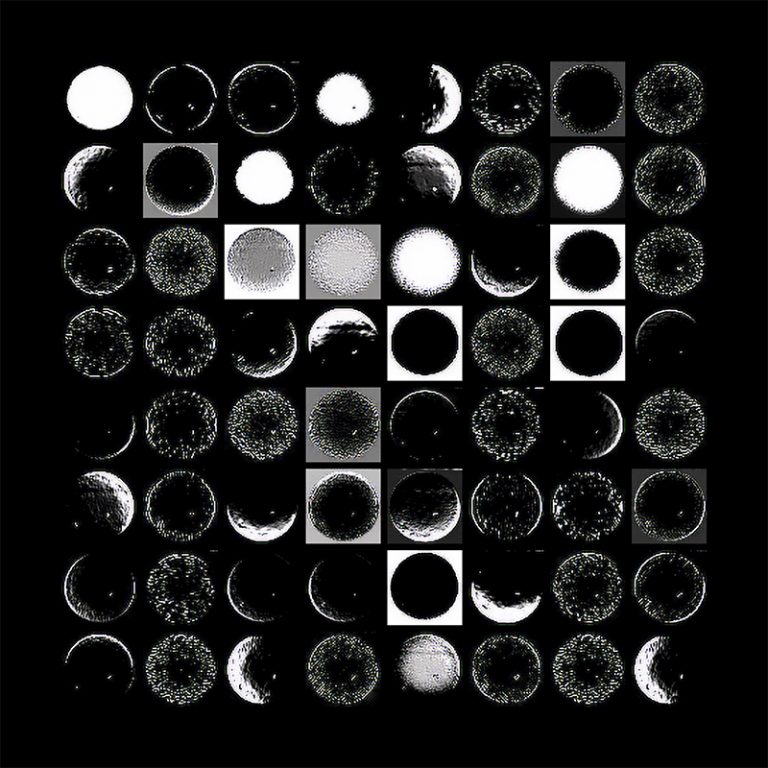
We are the first culture to experience our own archeology on a daily basis. Consider all the drawers, closets, and garages full of obsolete technological junk that only a few years ago represented a healthy investment and pride of ownership, not to mention an aura of utility. We endure the reek of flopping diskettes, the embarrassing bulge of zip drives, and a plethora of unplayable interactive CD-ROMS. There they rest, undergoing a slow decap - the bleeding out of readability. The codes present on their surfaces require other codes resident in no longer extant operating systems to software applications that are no longer maintained. Their codes are rendered unreadable not only by obsolescence but by contagion. They suffer the unavoidable desearse of bit rot, because there isn’t any pure information devoid of material. The bits of information are stored on modulations in the structure of material objects-as color, reflectivity, residual magnetism, buries charge-and these materials change form, composition, and position over time, erasing the data store there.
✚ Sanne Schilder, Making Meaning of the Sun
In the early 1890’s the Texan science-fiction author Bruce Sterling invented the phenomenon of cyberpunk, together with the sci-fi writers William Gibson from Canada and Suman R. Delaney of New York, an ex-boxer and professor of literature. Their creation married clean high-tech and dirty rubbish, order and anarchy, maternal artificial life and decomposing matter. Thecno- and necro- romanticism came together to create a new Lebensgefuhl. The inspired collaboration of Ridley Scott, film director, and Douglas Trumball, designer and set decorator, translated this feeling into cinema in the billiand Blade Runner (1982). The Matrix (1999), directed by Andy and Larry Wachowsku, fulfilled a similar function at the end of the 1990s for the now computer-literate fans of cyberculture, who by them were all linked via worldwide data networks. The horror that stalks the film matrix is no longer an individual, amoral machine that operates locally and has taken on human form, as in Bladerunner, but, instead, is a data network that spans the entire globe and controls each and every action, emotion and expression.
When one generation of computer hardware and software began to follow the next at ever shorter intervals, Sterling initiated “The Dead Media Project.” There, he exchanged his wanderings through an imaginary everyday life in the future for an energetic movement that traversed the past to arrive in the present. Together with like-minded people, in 1995 he started a mailing list (at that time, still an attractive option on the Internet) to collect obsolete software. This list was soon expanded to include dead ideas or discarded artifacts and systems from the history of technical media: inventions that appeared suddenly and disappeared just as quickly, which dead-eded and were never developed further; models that never left the drawing board; or actual products that were bought and used and subsequently vanished into thin air. Sterling’s project contronted burgeoning fantasies about the immortality of machines with the simple facticity of a continuously growing list of things that have become defunct. Machines can die. Once again, romantic notions of technology and of death were closely intertwined in “the Dead Media Project”.
LINK ARTIST
✚ Deep TIME of the MEDIA
Toward an Archeology of Hearing and Seeing by Technical Means
Siegfried Zielinski
Making Meaning of the Sun reveals images produced by machine image algorithms to analyse and identify the first surviving photo of the sun by Léon Foucault en Hippolyte Fizeau (1845).
There is a shadow world of images made by machines for other machines, an ever-expanding landscape of images that is alien to us.
Trough the eyes of the machine Schilder explores in what way machine perception can expand the field of photography and enrich our understanding of the world – Opening up to a ‘New Vision’ compared to a child that is learning to understand the world.
The working process of AI shows obscure images – a process that normally remains invisible to the human eye – and identifications ranging from 'chambered nautilus' to 'ping-pong ball'. The artificial sun serie remains cryptic but embrace nonhuman vision too see beyond our humanist limitations.
✚ Dissected Timeline
Jeanine
Verloop
deadmedia.org *click
Interesting to note that it seems that the Project itself is becoming 'dead' media. Links are not working anymore.
✚ Jeanine Verloop,
Dissected Timeline
✚ Peter Struycken (artist) & Pieter Padmos (physicist)
✚ Troika
‘All Colours White’
Summary interview by Max van Rooy.
"Art and science are not for the laity." 1978.
Peter Struycken is a visual artist and uses precise aids such as computers and computer-controlled color television. Pieter Padmos is a physicist, affiliated with the Institute for Sensory Physiology T.N.O. in Soesterberg and investigates with the same exact equipment in the operations of the eye. They both conduct basic research from which practical applications arise. Despite the different objectives, their figurative areas of work are overlapping.
Padmos's research aims to learn as much as possible about the way in which light enters the eye and ultimately leads to a sensation via the retina. He assesses this by means of electrical measurements on the eye or brain. Struycken searches for diverse constellations of colors. And produces the differences, it is his assessment as an artist that indicates what is different. He wants to present color in such a way that form and movement aspects are subordinated to the color experience.
Caption: art from calculation, Kunstschrift 22nd year 1978: Peter Struycken 'Kleur: standaard', 1978 (detail). With the help of computer and color television, Peter Strucken is better than before with paint and brush able to achieve his goal of 'showing kinds of color differences'. He can show 256 different color nuances per program. First he gives the computer a sine curve for each three color components (for TV these are red, green and blue). With this he determines the gradient and the speed of each color between 0 (black) and 100% (the maximum intensity) (see images below). By varying the course of the sine for each of the three colors, a varied overall picture is created. But this is only an inventory of the colors. The final presentation can be done by means of different programs: small blocks, large areas, squiggly lines. In all cases, the screen is slowly 'filled in' until a certain 'color structure' is created. The image on the right is a photo of part of the TV image, deliberately made out of focus by Struycken to emphasize the color and not let the shape be a distracting factor.

LINK ARTIST
The new media and technologies by which we amplify and extend ourselves constitute huge collective surgery carried out on the social body with complete disregard for antiseptics. If the operations are needed, the inevitability of infecting the whole system during the operation has to be considered. For in operating society with a new technology, it is not the incised area that is most affected. The area of impact and incision is numb. It is the entire system that is changed. The effect of radio is visual, the effect of the photo is auditory. Each new impact shifts the ratios among all the senses. What we seek today is either a means of controlling these shifts in the sense-ratios of the psychic and social outlook, or the means of avoiding them altogether. To have a disease without its symptoms is to be immune. No society has ever known enough about its actions to have developed immunity to its new extension of technologies. Today we have begun to senso that art may be able to provide such immunity.
In the history of human culture there is no example of a conscious adjustment of the various factors of personal and social life to new extensions except in the puny and peripheral efforts of the artist. The artist picks up the message of cultural and technological challenge decades before it’s transforming impact occurs. He then builds models or Noah’s arks for facing the change that is at hand. “The war of 1870 need never have been fought had people read my Sentimental Education,” said Gustave Flaubert.
It is in this aspect of new art that Kenneth Galbraith recommends the careful study of businessmen who want to say in business. For in the electric age there is no longer any sense in telling about hta artist’s being ahead of his time. Our technology is, als, ahead of its time, if we reckon the ability to recognize it for what it is. To prevent undue wreckage in society, the artist tends now to move from the ivory tower to the control tower of society. Just as higher education is no longer a frill or luxury but a stark need of production and operational design in the electric age, so the artist is indispensable in the shaping and analysis and understanding of the life forms, and structures created by electric technology.
The percussed victims of the new technology have invariably, muttered cliches about the impracticality of artists and their fanciful preferences. But in the past century this has come to be generally acknowledged that, in the world of Wyndham Lewis, “The artist is always engaged in writing in detailed history of the future because he is the only person aware of the nature of the present.” Knowledge of this simple fact is now needed for human survival. The availability of the artist to sidestep the bully blow of new technology of any age, and to parry such violence with full awareness, is age-old. Equally age-old is the inability of the percussed victims, who cannot sidestep the new violence, to recognize their need of the artist. To reward and to make celebrities of artist can, also, be a way of ignoring their prophetic work, and preventing it’s timely use for survival. The artist is the man in any field, scientific of humanistic, who grasps the implications of his actions and of new knowledge in his own time. He is the man of integral awareness.
The artist can correct the sense ratios before the blow of the new technology has numbed conscious procedures. He can correct them before numbness and subliminal groping and reaction begin. If this is true, how is it possible to present the matter to those who are in a position to do something about it? If there was even a remote likelihood of the analysis being true, it would warrant a global armistice and period of stocktaking. If it is true that the artist possesses the means of anticipating and avoiding the consequences of technological trauma, then what are we to think of the world of bureaucracy of “art appreciation”? Would if not seem suddenly to be a conspiracy to make the artist a frill, a fribble, or a Milltown? If men were able to be convinced that art is precise advance knowledge of how to cope with psychic and social consequences of the next technology, would they all become artists? Or would then begin a careful translation of new art forms into social navigation charts? I am curious to know what would happen if art were suddenly seen for that it is, namely, exact information of how to rearrange one’s psyche in order to anticipate the next blow from our own extended faculties. Would we, then, cause to look at works of art as and explored might regard the gold and gems used as the ornaments of simple non literates?
Input: The first surviving photo of the sun by Léon Foucault en Hippolyte Fizeau (1845)
✚ Marshall McLuhan
Understanding Media
Challenge and collapse
The nemesis of Creativity
Chapter 7
pag 69-72
Output:
1. Chambered nautilus 0.239239849238
2. Golf ball 0.2392398492384
3. Tick 0.2392398492384
✚ Ted Chiang,
The Great Silence
The humans use Arecibo to look for extraterrestrial intelligence. Their desire to make a connection is so strong that they've created an ear capable of hearing across the universe.
But I and my fellow parrots are right here. Why aren't they interested in listening to our voices? We're a nonhuman species capable of communicating with them. Aren't we exactly what humans are looking for?
(...)
“But parrots are more similar to humans than any extraterrestrial species ever will be, and humans can observe us up close; they can look us in the eye. How do they expect to recognize an alien intelligence if all they can do is eavesdrop from a hundred light-years away?”
(...)
Human activity has brought my kind to the brink of extinction, but I don't blame them for it. They didn't do it maliciously. They just weren't paying attention. And humans create such beautiful myths; what imaginations they have. Perhaps that's why their aspirations are so immense. Look at Arecibo. Any species who can build such a thing must have greatness within them.
My species probably won't be here for much longer; it's likely that we'll die before our time and join the Great Silence. But before we go, we are sending a message to humanity. We just hope the telescope at Arecibo will enable them to hear it.
The message is this:
You be good. I love you.
The Great Silence by Ted Chiang.
Collaboration with visual artists Jennifer Allora and Guillermo Calzadilla, who created a complementary video installation that juxtaposed the radio telescope at the Arecibo Observatory in Puerto Rico with the endangered parrots in the forests nearby.
The parrot, observing humanity's quest for extraterrestrial life, reflects on why humanity spends so much time looking for intelligence elsewhere, when it itself is intelligent, and located right next to us.
The Great Silence” is another name for the Fermi Paradox, two contradictory truths: 1) the idea that we represent the only intelligence in the universe is preposterous and 2) despite the increasing range of our extraterrestrial search, we have found only silence.
✚ The Great Silence
Ted Chiang
Allora & Calzadilla (in collaboration with Ted Chiang)
The Great Silence, 2014
3-channel HD video, 16 minutes 22 seconds
Installation view, Sharjah Biennial 13, 2017
[click for link]
✚ Villém Flusser, philosophy of photography
Arecibo Observatory, Photo by Tyrone Chuang, Feb 2020
Human beings create tools and in so doing take themselves as the model for this creation - until the situation is reversed and human beings take their tools as the model of themselves, of the world and of society. Hence the wellknown process of alienation from one's own tools. In the eighteenth century, human beings invented machines, and their own bodies served as a model for this invention - until the relationship was reversed and the machines started to serve as models of human beings, of the world and of society.
Villém Flusser, Toward Philosophy of photography 1983 - p.78
✚ Villém Flusser, Towards philosophy of photography
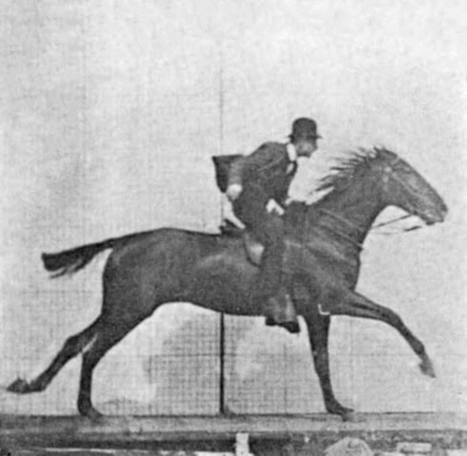
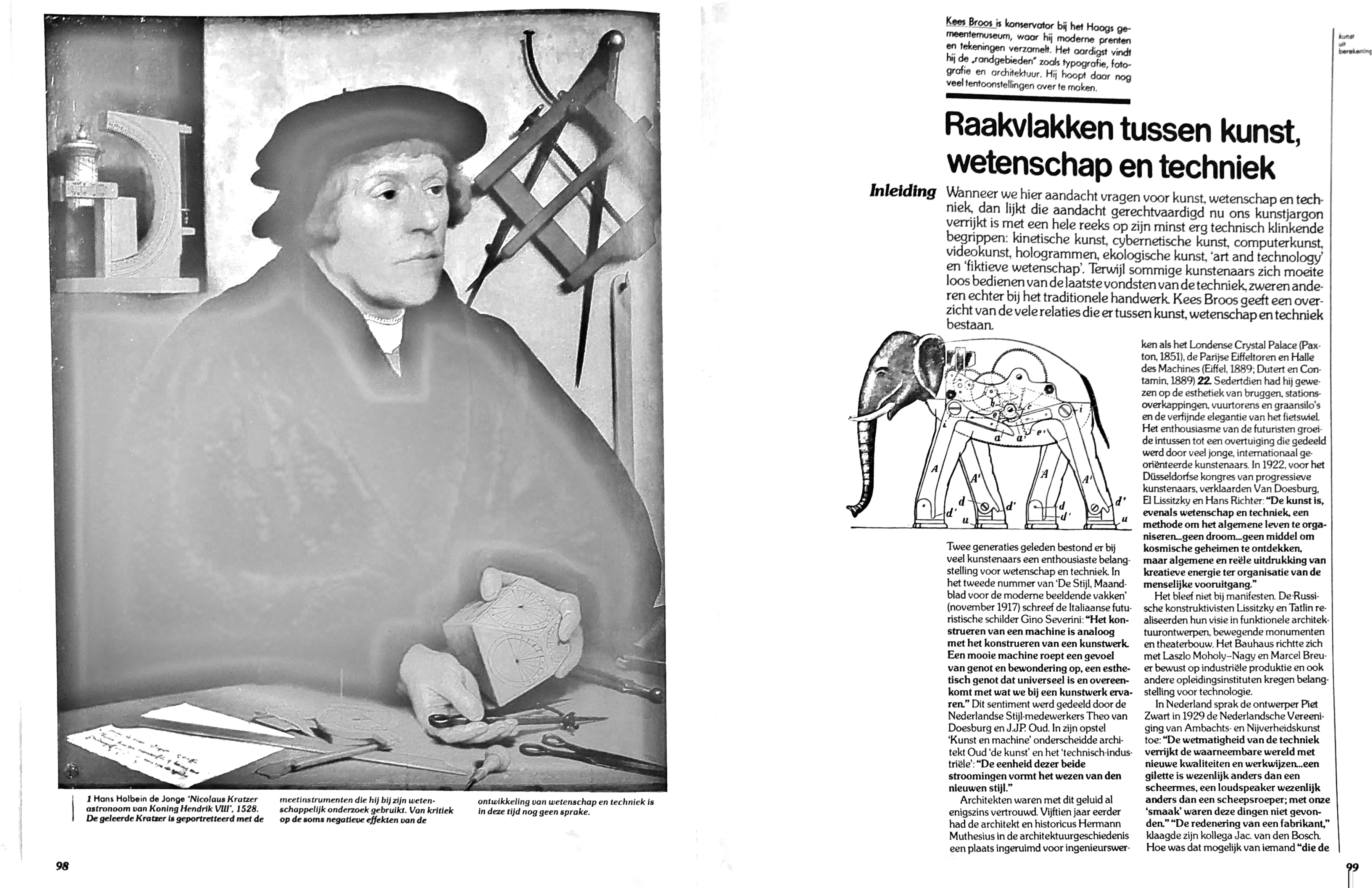
Two generations ago, many artists showed an enthusiastic interest in science and technology. In the second issue of 'De Stijl, Maandblad for modern visual subjects' (November 1917), the Italian Futurism painter Gino Severini wrote: "Constructing a machine is analogous to constructing a work of art. A beautiful machine evokes a feeling of pleasure. and admiration, an aesthetic pleasure that is universal and corresponds to what we experience in a work of art. " This sentiment was shared by Dutch Style employees Theo van Doesburg and J.JP. Old. In his essay 'Art and machine', architect Oud distinguished 'art' and the 'technical-industrial': "The unity of these two movements is the essence of the new style."
Architects were already somewhat familiar with this sound. Fifteen years earlier, the architect and historian Herman Muthesius had made a place in architectural history for engineering works such as London's Crystal Palace (Paxton, 1851), the Paris Eiffel Tower and Halle des machines (Eiffel, 1889; Dutert and Contamin, 1889). Since then he has highlighted the aesthetics of bridges, station canopies, lighthouses and grain silos and the refined elegance of the bicycle wheel. The enthusiasm of the Futurists meanwhile grew into a convincing one that was shared by many young internationally oriented artists. In 1992, before the Düsseldorf Congress of Progressive Artists, van Doesburg, El Lissitzky and Hans Richter stated: "Art, like science and technology, is a method of organizing general life ... not a dream ... not a means to discover cosmic secrets, but general and real expression of creative energy for the organization of human progress.
It didn't stop at manifestos. The Russian constructivists lissitzky and Tatlin realized their vision in functional architectural design, moving monuments and theater construction. The Bauhaus, with Laszlo Moholy-Nagy and Marcel Breuer, deliberately focused on industrial production and other training institutes also became interested in technology.
✚ Art from Calculation, September '78
✚ September '78 22nd volume number 3
Public art collection
Art from Calculation
Interfaces between art, science and technology.
Kees Broos
Eadweard Muybridge, Sallie Gardner at a Gallop (The Horse in Motion) 1877: A pioneer of science and art.
✚ Temple OS,
Terry A. Davis
We can make a very rough classification of the material and distinguish a few categories:
a) Art as an illustration of science and technology;
b) Art that makes use of scientific ideas and technical possibilities;
c) Art that provides commentary on science and technology;
d) Art that coincides with science and art as a form of research;
e) Science and technology seen as art.
Art visualizes
If there had been no artists, we would have known a lot less about medieval technology. Now we can learn from miniatures what windmills and waterwheels, spinning wheels, looms and sewers and bells looked like, how plowing was done, how locks, water pipes and sewers worked. Only recently we were made aware of how exactly Pieter Bruegel the Elder has depicted techniques, hoists and cranes in his paintings of 16th century architectural constructions and how the state of medical knowledge can be read in his work.
This illustrative aspect of the visual arts became truly functional when science ceased to be a closed, secrative activity and was opened up by the printing press. After the first technical and medical illustrations in the fifteenth century, in Valerius 'De re militari' (1472) and Ketham's 'Fasciculo di Medicina' (1493), the artist's role as a visualization of scientific knowledge grows. Without the contributions of woodcarvers and copper engravings, botanical and zoological knowledge was less easy to transfer - in a next article, Carla Oldenburger will talk about the role of botanical illustration. Geography flourished in the Netherlands through the fusion of science and art in the cartographic masterpieces of Ortelius, Mercator and Blaeu.
The natural tracts of Simon Stevin and Christiaan Huygens were clearly illuminated, as were the medical-anatomical works of Pieter Paauw and Nicolaas Tulp [. Scientific and popular scientific illustration grew into a specialty, culminating in the Encyclopédie of Diderot and d'Alembert (1751-1780), which contained 12 plates in addition to 21 volumes of text. Although the 19th century wood engravings from physics books evoke an atmosphere of their own, they seem to be left to experienced able-bodied people. Inventive artists were no longer concerned with it. A single exception; Otto Neurath and Gerd Arntz designed around 1930 image statistics, a crystal-clear, graphic visualization of facts in the socio-economic field, the result of close collaboration between scientists and artists.(2) A very different example is the use of the prints of M. C. Escher as illustrations in textbooks for mathematics and chemistry. Although the prints were initially made as independent works of art, Escher was pleasantly surprised by the extra return they had in this way. Only recently, especially from the circles of graphic designers, attention has been drawn to the much greater contribution that the 'visual specialists' of our time could have in the transfer of knowledge in every field.
Art uses science and technology
We noticed that every art form involved a certain level of science and engineering. It does, of course, make a difference whether an artist applied ancient, simple techniques at a certain point in time, or whether he mastered the latest insights in those areas. However, the latter was done eagerly: the teaching of the correct perspective, later the use of the camera obscura, the application of anatomical knowledge, the design according to the golden ratio, the processing of Newton's color theory. Frederik van der Blij indicates in his article how mathematics has given art a helping hand (page 124). All things that were beneficial for art, the result only became more interesting, illusionistic. Moreover, the words "art" and "science" did not have such different meanings until the 19th century. Only then will the use of technical aids by artists become problematic.
A good example is photography, which applies chemical and physical principles for the purpose of capturing images. The fact that a technical device had to be used to take a photo was sufficient proof that there was no question of art. The dispute about 'art' and 'technology' ran high, without much meaningful result. It has been overlooked, that "the loom, the harpsichord and the printing press represent as many mechanizations of the simpler basic process (braiding, playing the lute, writing), without questioning the possibility of an aesthetically significant achievement for that reason", according to art historian H. van de Waal.
Still, artists like Delacroix and Degas were so intimidated by this anti-technical sentiment that they preferred to keep their own use of photography a secret. In recent years, doubts about photography have disappeared with increasing speed: from historical curiosities photos have become coveted collectibles, even in museums. the artist is free to use any piece of science or technology. Another thing is that expectations have sometimes been too high. After all, the application of the latest techniques alone does not guarantee the creation of art. Even the computer does not automatically deliver convincing computer art.
Art provides commentary on science
When Holbein paints the portrait of Nicolaus Kratzer, Henry VIII's astronomer, he seems to have no difficulty whatsoever in depicting the display of instruments belonging to his profession. You have the impression that Holbein shared knowledge and interest with the person portrayed. In subsequent centuries the men of science were portrayed as naturally useful members of society: like Nicolaes Tulp by Rembrandt, special interest in their style seems less with the painter. We find criticism of the social consequences of technology during the industrial revolution, in England, where the blessings of technology are also lyrically interpreted at the same time. With the sometimes uncritical embrace of science in the 1920s, there are artists who unleash their irony on it, and that does not seem out of ignorance or silliness. it resembles an 'other' technique: starting from an impossible, absurd starting point, a play on words, a dream image and further developing it according to true straight logical lines, working according to the rules. Marcel Duchamp, Picabia and Man Ray did it with great ingenuity and pleasure.
In the Netherlands, Constant designed his New Babylon, fantastic but technically feasible housing projects, which paint a picture of what could be possible, provided utopian social conditions were met. Panamarenko designs the most unlikely flying devices, which, according to conclusive reasoning, should take to the skies. Also on the ground they remain beautiful paraphrases of the technical world of shapes. (3)
Art as a form of research
It was not until the seventeenth century that the word 'art' gained meaning in the sense of 'painting', 'drawing', 'sculpture'. Previously, it also included music, geometry, astronomy and grammar. It was not unusual for Leonardo da Vinci to deal with anatomy, time measurement, music, mechanics and fortifications as well as painting. His artistic colleagues Piero della Francesca, Leon Battista Alberti, Paolo Uccello and Albrecht Dürer were equally curious about how the world worked. The rediscovery in 1965 of a large number of Leonardo's scientific drawings further enhanced his status as a scientist. The widely held twentieth-century view that art would be 'something completely different' from science, in any case, did not apply here. take the drawings Leonardo made of water waves (6). At first sight beautiful impressions of foaming water masses, but on closer inspection very exact studies of water movements. The artistic and scientific method coincide perfectly; without losing its fascination, nature exposes its laws.
✚ I Will Say Whatever You Want In Front Of A Pizza
Sebastian Schmieg
✚ Weirdcore
Aphex Twin
LINK BOOK
✚ Jeroen Rijnart,
cyberdelic.space
https://www.cyberdelic.space/ is a psychedelic reflection on the internet as a technology.
✚ The serious relationship of art and technology (external link)
✚ Leonardo da Vinci showed how art can advance scientific progress
(external link)
[LINK](Journal) opens up conversations with individuals and forward thinkers working towards change. It is a fertile ground for discussion, addressing the following topics;
– Materiality of digital systems
– Exchanges of information mediated by the physical environment
– Transparency of processes within creative project development
– Embodied methodologies of digital environments
The journal is exploring these topics through the design discipline; speaking directly to how design and creative practitioners are intertwined within digital and ecological interactions.
It connects the dots, making links in-between the signs, words, lines and pages of this book. What is a book but a body of symmetries, ink on paper, bound together with string, connecting narratives, connecting materials, and connecting the in betweens? The journal hence serves as a conceptual and practice-based space on how we can reflect on our relationship, with dominant narratives of 2020.
LINK’s Key Values are
[Experimental]
LINK is experimental, purposefully meandering. It is a space to bridge ideas, generate new thoughts, engage in conversations and reflect on those intricate connections easily overlooked amidst the process of creation.
[Open]
With the aim of making our thought process an open book, we communicate the design process with total transparency for the readers to gain a holistic understanding of how this medium is explored.
[Design-Led]
Design today can be a process, a methodology, or a language, with the mission to translate information and communicate knowledge to society. It will make a projection of tomorrow’s in-between spaces by sharing emerging topics within the areas of design practice and material futures.
[States of Matter]
The ancient Greeks translated the natural science of physics as “knowledge of nature”, it studies matter, its motion, and behaviour in relation to space and time. The ‘state’ of an element refers to the structure and form of its materiality within a specific moment in time. It is a temporal mode of existence, with the power to radically transform, when introduced to a new environment.
Hence, the state of the particles that make up one matter is not the same as another. In the same way that physics studies matter, this first issue analyses the nature of information and its physical embodiment through the lens of creative disciplines. States of Matter explores the changing materialities of digital systems and the impact of the interdependency between physical and digital spaces.
It questions the possibilities for what is matter, with the aim to provoke our current understandings, progress these concept between now and the future. Is matter a form of energy? Can we hold it? Can we interact with it? How can we further unpack the definitions of matter?
E-books as we know them tend to follow the standards formed by the history of the codex over the course of hundreds of years. They
function like paper books but in digital form, with a cover, a half title page, and then starting on the first page with a table of contents or an introduction. Why should it be that way? As we know, the medium is the message. Couldn’t the digital book be put to work to foster a different message?
New habits and societal demands translate into new forms and styles of writing and publishing, writes Amaranth Borsuk in The Book. Our age of ubiquitous media has confronted us with such new habits and demands. How can the book as a form respond? As Caleb Everett writes in Working on Our Thoughts: ‘The electronic book – as represented by the prevailing format, the EPUB – is not only a vessel for text and images but a set of rules that determine how to edit, design, and read.’ How then to develop a rule set that caters to a different way of writing and publishing, truly applying the options that digital technology has to offer? How can digital publishing open up to new styles of writing, editing, or even thinking?
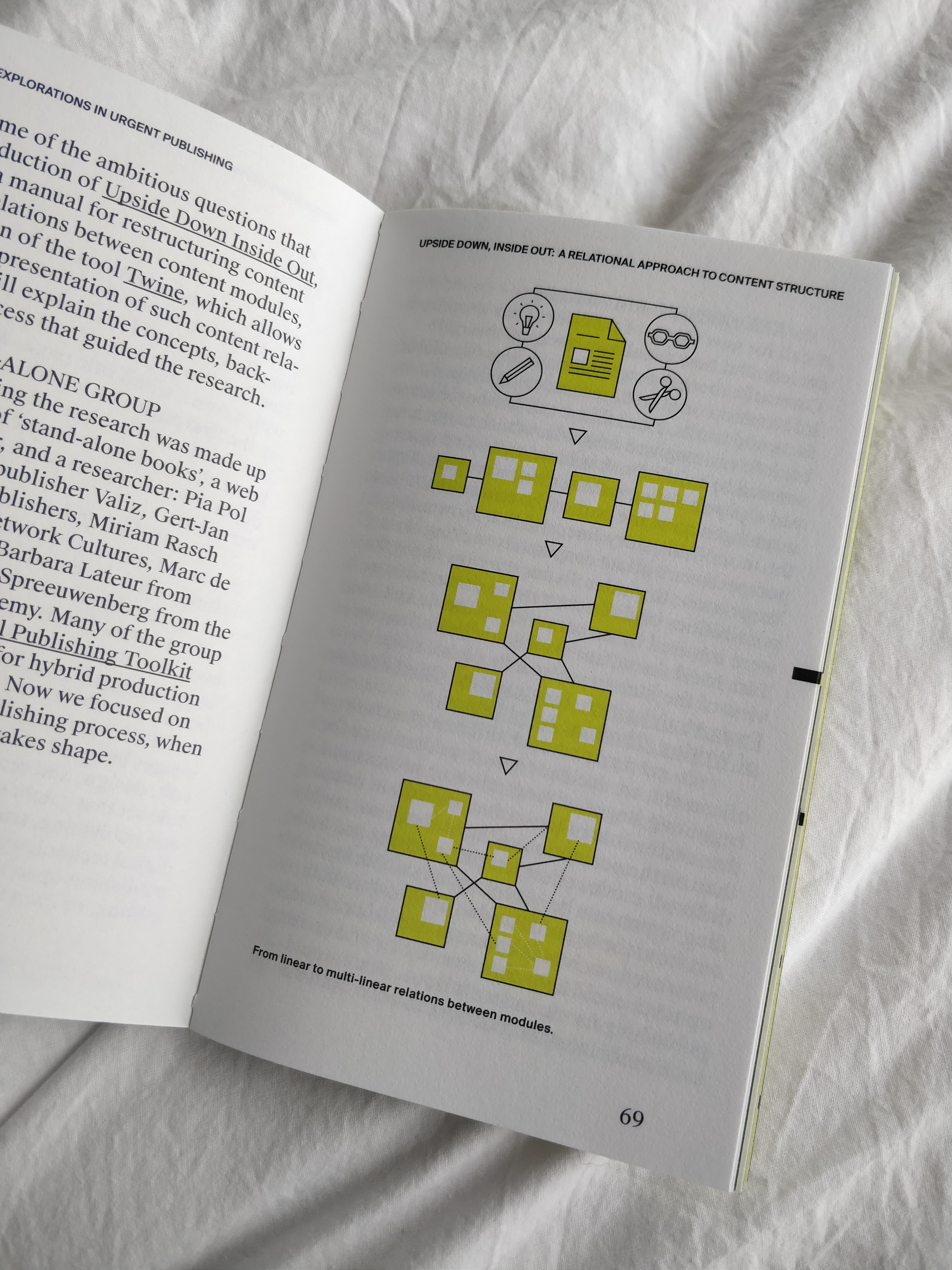
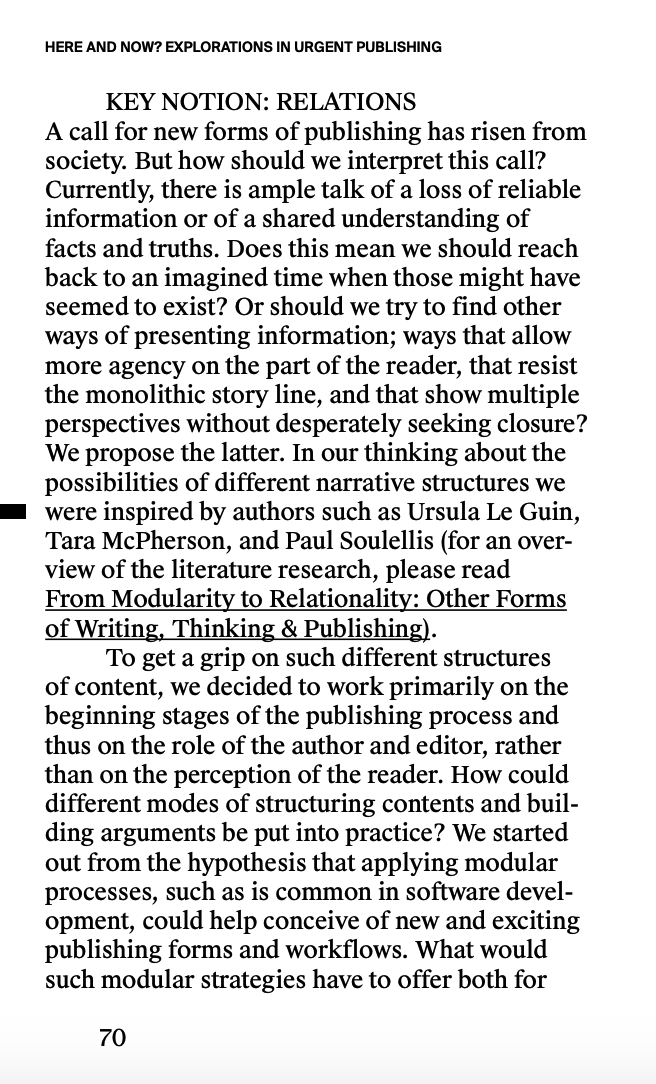
Jean Tinguely, Metamatics
Paul Klee
The Thinking Eye
Designing Organs at the Transpecies Society: Hybrid Practices between Cybernetics and Artificial Intelligence
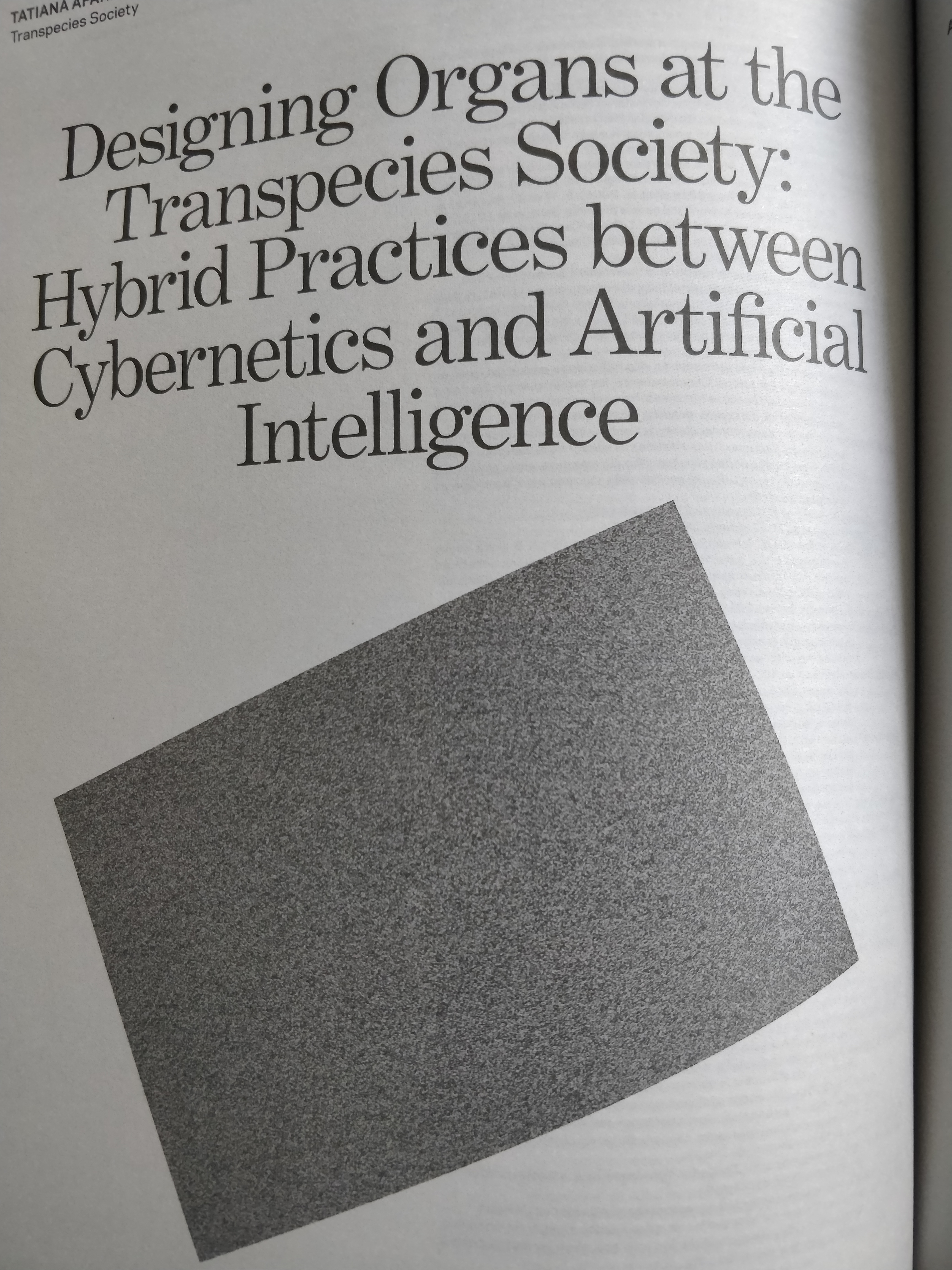
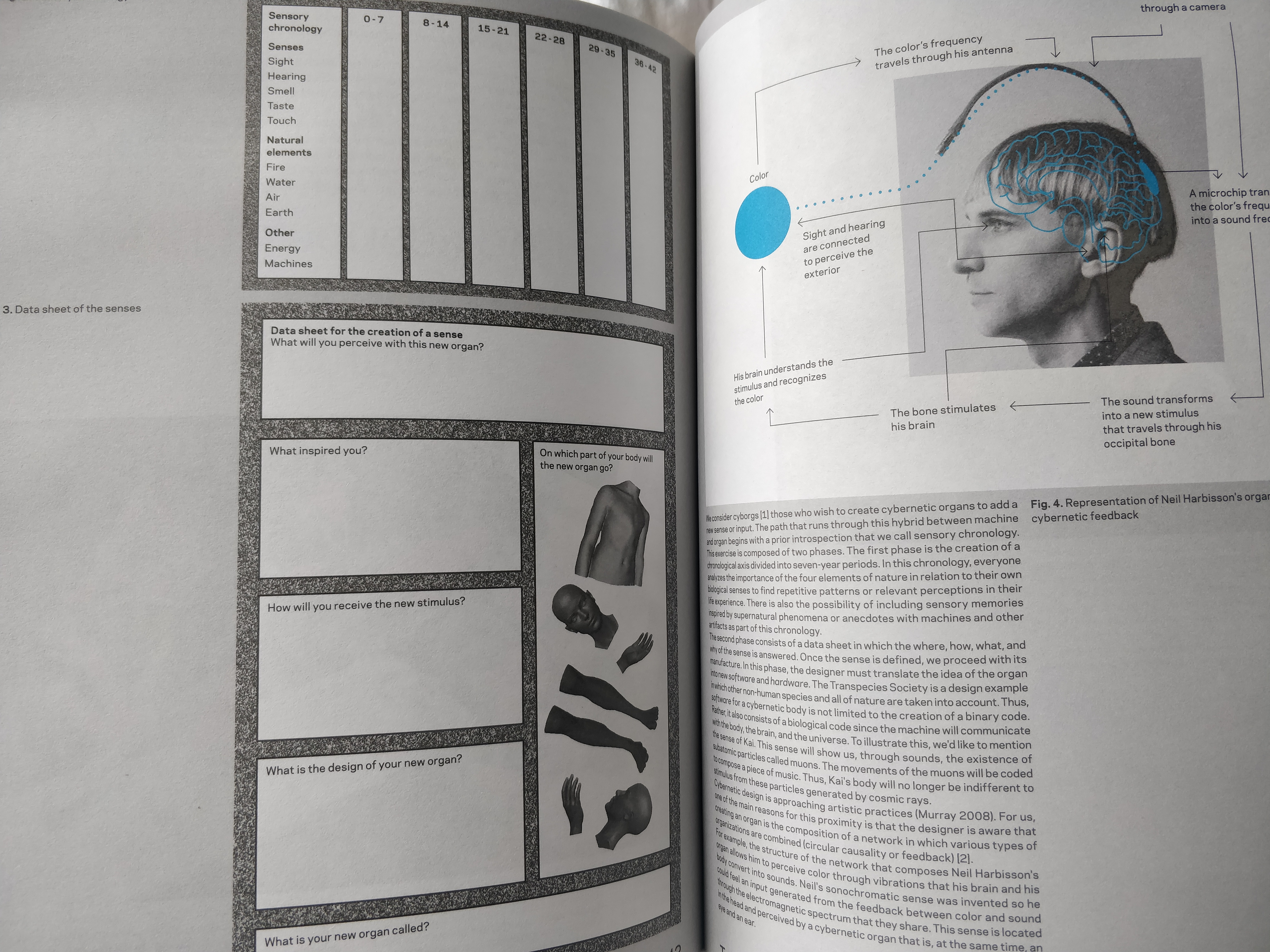
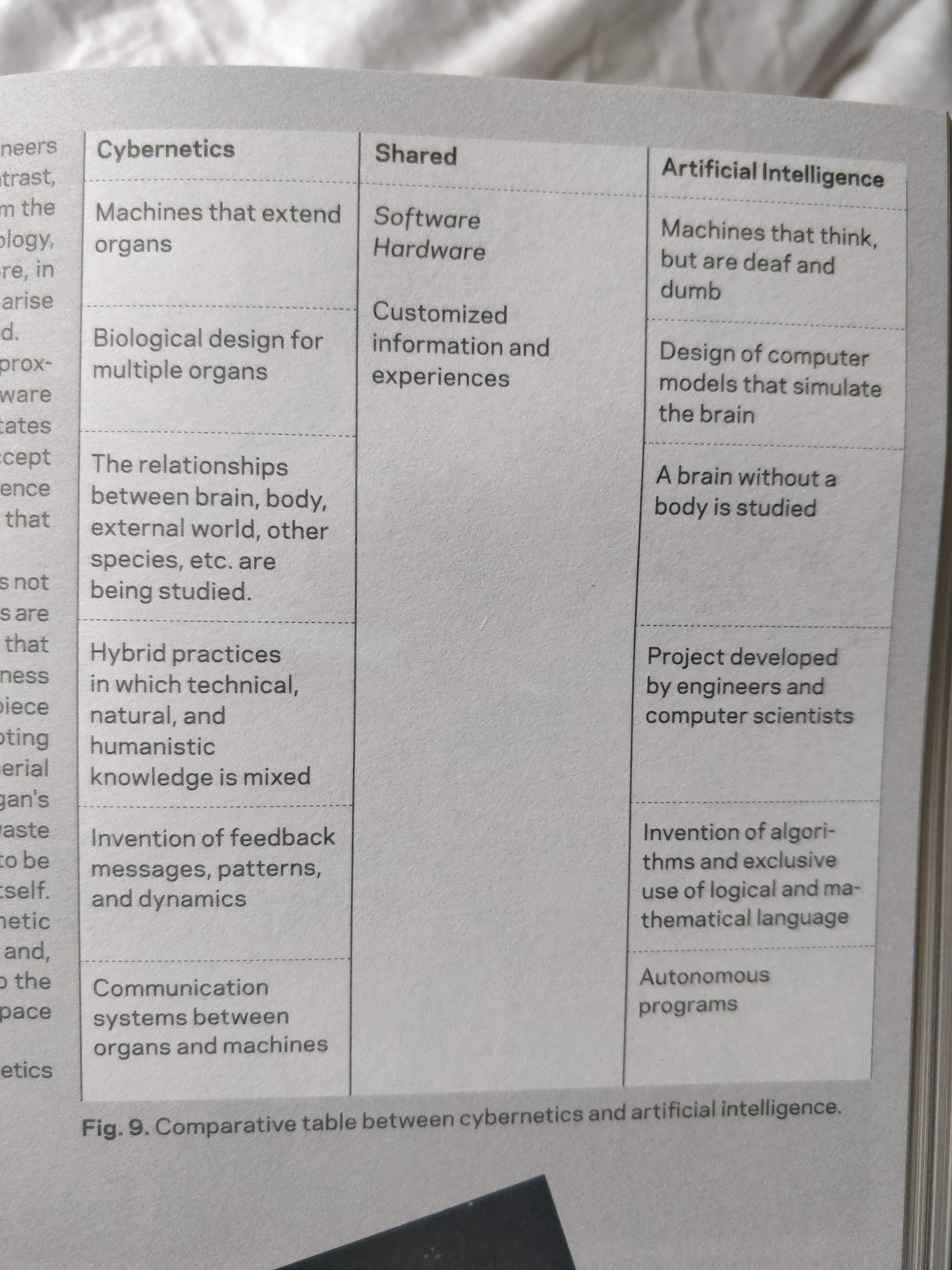
An Infinite Séance 3
Infinite loop, infinite scrolling, numbered days
The WWW started as “pages”—texts to be read, edited, and linked. But, there was hardly ever a time when this analogy really made sense. Every update of the HTML standard, every new version of browser-made content appeared more dynamic, multimedia, “rich,” less paper-like, more like a projection screen. First metaphorically and then more substantially—when we started to open browsers to watch YouTube, Vimeo, Netflix, name yours.
And, even if we don’t take streaming video into account, websites today are largely cinematic. Moving images, soundtracks, special effects, three-dimensional spatiality, and immersion are turning what we once called pages into “wow experiences,” that we know from visiting movie theaters.
When I try to rewind, to untangle this media-hybrid knot to trace the origins of different effects, I’m always happy to see that there are not solely themes borrowed from video games, film, theater, and centuries-old stage magic. The WWW established and kept its own browser-specific traditions of scenography, montage, and stunts.
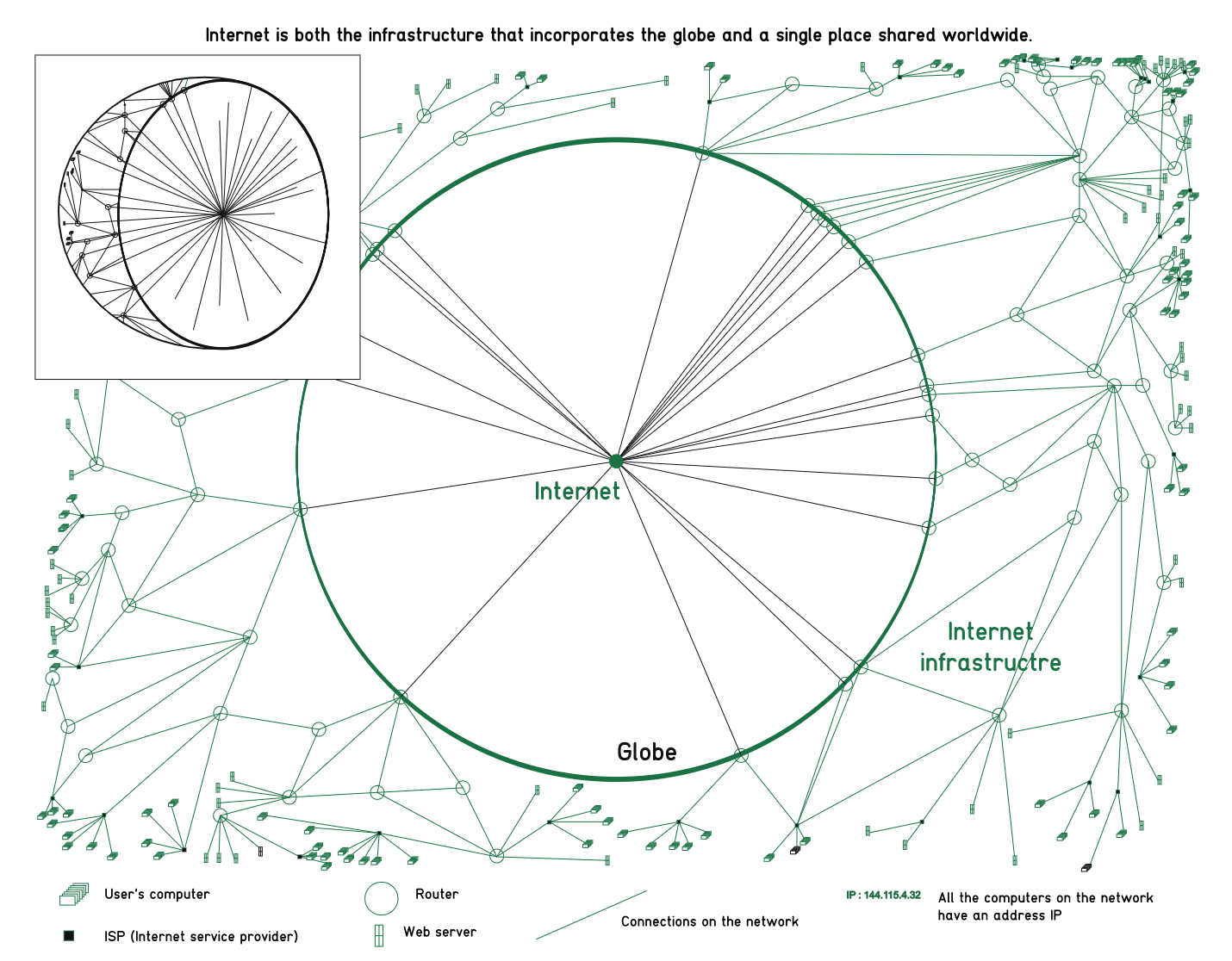
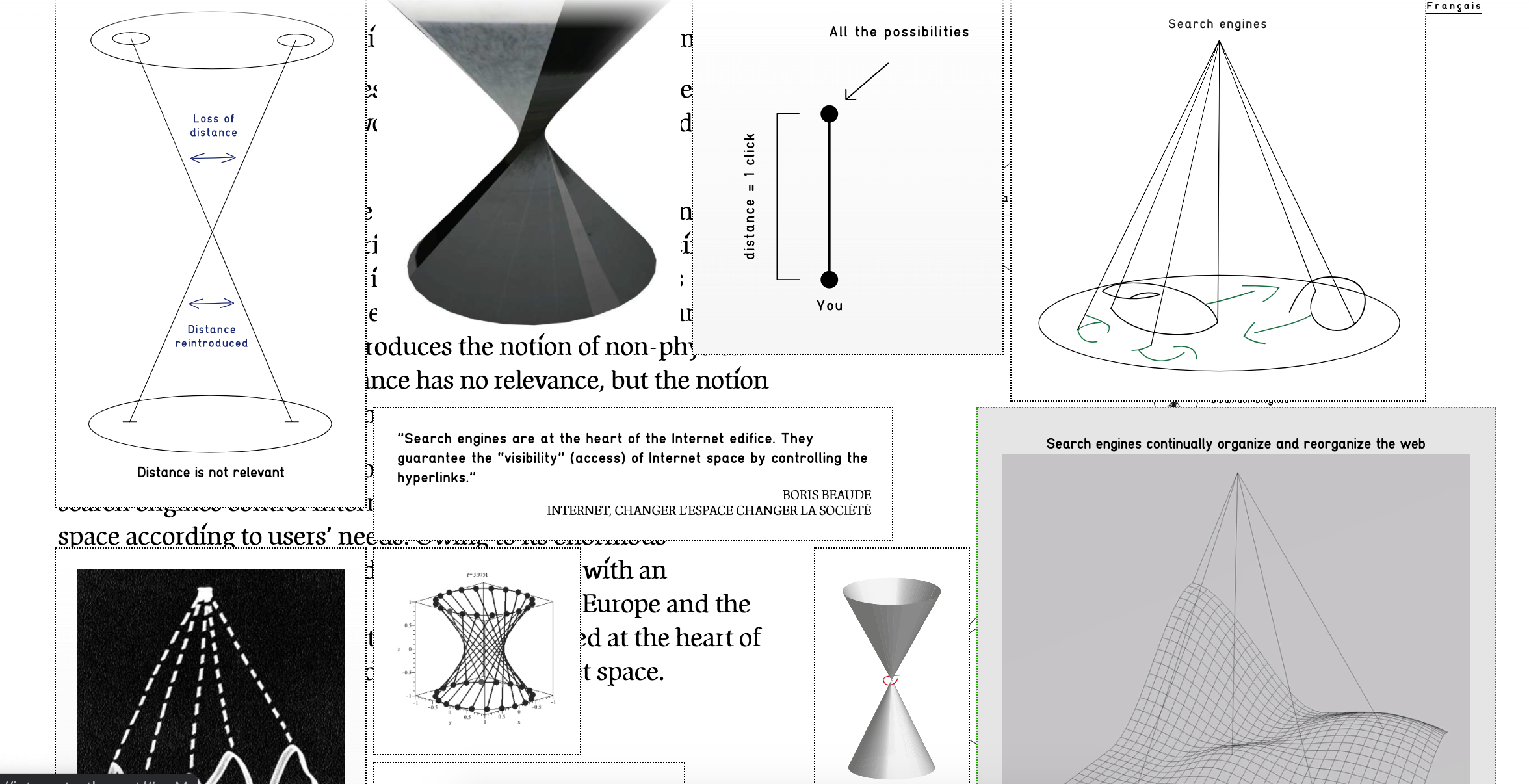
Louise Drulhe, Critical Atlas of the Internet
Although there are numerous texts about the Internet, there are few publications that use spatial interpretation as a tool for socio-political analysis. In his book, “Internet : changer l’espace, changer la société” (Internet changing space, changing the society), Boris Beaude explains that the concrete issues and spatial properties of Internet are linked. He shows that the Internet is a real space and, because spaces shape society, it is the Internet as a new space that we have to consider. The aim of the “Critical Atlas of Internet” is to use spatial analysis as a key to understanding social, political and economic issues on Internet. Here, we seek to discern the shape of the Internet in order to understand the concrete issues and stakes involved.
DNA is an attractive medium to store digital information. Here, we report a storage strategy, called DNA fountain, that is highly robust and approaches the information capacity per nucleotide. Using our approach, we stored a full computer operating system, movie, and other files with a total of 2.14×106 bytes in DNA oligos and perfectly retrieved the information from a sequencing coverage equivalent of a single tile of Illumina sequencing. We also tested a process that can allow 2.18×1015
retrievals using the original DNA sample and were able to perfectly decode the data. Finally, we explored the limit of our architecture in terms of bytes per molecules and obtained a perfect retrieval from a density of 215Petabyte/gram of DNA, orders of magnitudes higher than previous techniques.
✚ Poetic Computation by Taeyoon Choi
✚ 'Better Than the Real Thing' Franklin Till Journal
✚ 'The Medium is the message' Marshall McLuhan
Artists, designers and brands are turning to digital realism to create compelling experiences both online and offline
'Better Than the Real Thing' Franklin Till Journal
✚ Louise Drulhe, Critical Atlas of the Internet
In the mid-1950s Jean Tinguely began production of a series of generative works titled Métamatics: machines that produced art works. With this series of works Tinguely not only problematised the introduction of the robotic machine as interface in our society, but also questioned the role of the artist, the art work and the viewer. Metamechanics (French méta-mécanique), in relation to art history, describes the kinetic sculpture machines of Jean Tinguely. It is also applied to, and may have its origins in, earlier work of the Dada art movement.
✚ Here and Now? Explorations in Urgent Publishing
✚ Jean Tinguely, Metamatics
✚ Digital Memory and the Archive
✚ Designing Organs at the Transpecies Society: Hybrid Practices between Cybernetics and Artificial Intelligence
✚ DNA Fountain enables a robust and efficient storage architecture
✚ Paul Klee, The Thinking Eye
Here and Now? Explorations in Urgent Publishing
DNA Fountain enables a robust and efficient storage architecture
✚ An Infinite Séance 3
An Infinite Séance 3,Olia Lialina, (external link)
Media archaeology as a transatlantic bridge
Some of the main subjects in these collected essays have obviously been in -
spired by Michel Foucault’s notions of archéologie and l’archive. Both notions,
though, are being used against the background of archaeology and the archive
in the positivistic sense.The author has been academically trained as a historian. Once experienced as the basic agency of source material for historical research,the archive has since turned into a subject of research. Nothing is more deconstructive than the archive itself.
Culture (and its escalations in technological media) is a function of knowledge transfer as well as of storage. A certain traditional European archival aesthetics has been closely connected to notions of secrecy (be it in the Roman Vatican or in Prussia), contrasted with a somewhat more liberal attitude on archives in the United States, where it is imperative that archival institutions actively take care to make their contents accessible and known to the public—a core democratic attitude of our postmodern condition.The media archaeological approach is in fact about the unrevealing of symbols, signals, and information. In the age of technology-driven media, both material archaeological strata and the symbolical order of the archive are progressively being conceived as essentially processual by nature, to be deciphered as operative diagrams—close to what Charles S. Peirce defined as “diagrammatic reasoning.” Humans almost irresistibly relate to images in an iconologic way, to sound in a musical way, and to texts in a hermeneutic way. But there is a kind of knowledge that can instead be uncovered from within the visual, acoustic, or textual endodata: entering the digitized record itself (data immersion), which is the media-archaeological gaze that can be performed by algorithmic machines of information processing better than by human perception.
Digital Memory and the Archive (external link)
Online Tour of Dublin's Tech Infrastructure (external link)
Wifi Tapestry, Richard Vijgen
'Researchers from Microsoft and the University of Washington have demonstrated the first fully automated system to store and retrieve data in manufactured DNA — a key step in moving the technology out of the research lab and into commercial datacenters.
In a simple proof-of-concept test, the team successfully encoded the word “hello” in snippets of fabricated DNA and converted it back to digital data using a fully automated end-to-end system, which is described in a new paper published March 21 in Nature Scientific Reports.
DNA can store digital information in a space that is orders of magnitude smaller than datacenters use today. It’s one promising solution for storing the exploding amount of data the world generates each day, from business records and cute animal videos to medical scans and images from outer space.
Microsoft is exploring ways to close a looming gap between the amount of data we are producing that needs to be preserved and our capacity to store it. That includes developing algorithms and molecular computing technologies to encode and retrieve data in fabricated DNA, which could fit all the information currently stored in a warehouse-sized datacenter into a space roughly the size of a few board game dice.'
Microsoft demonstrate first fully automated DNA data storage
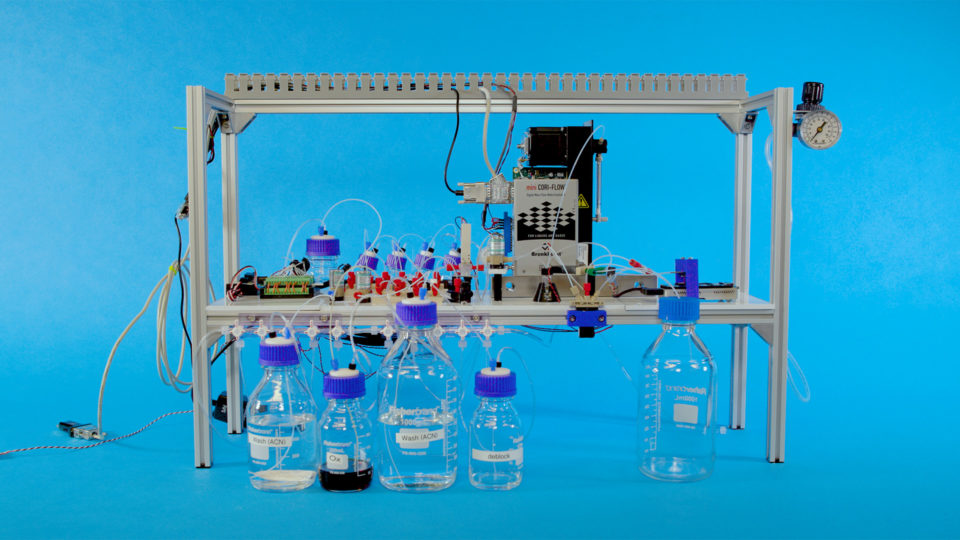
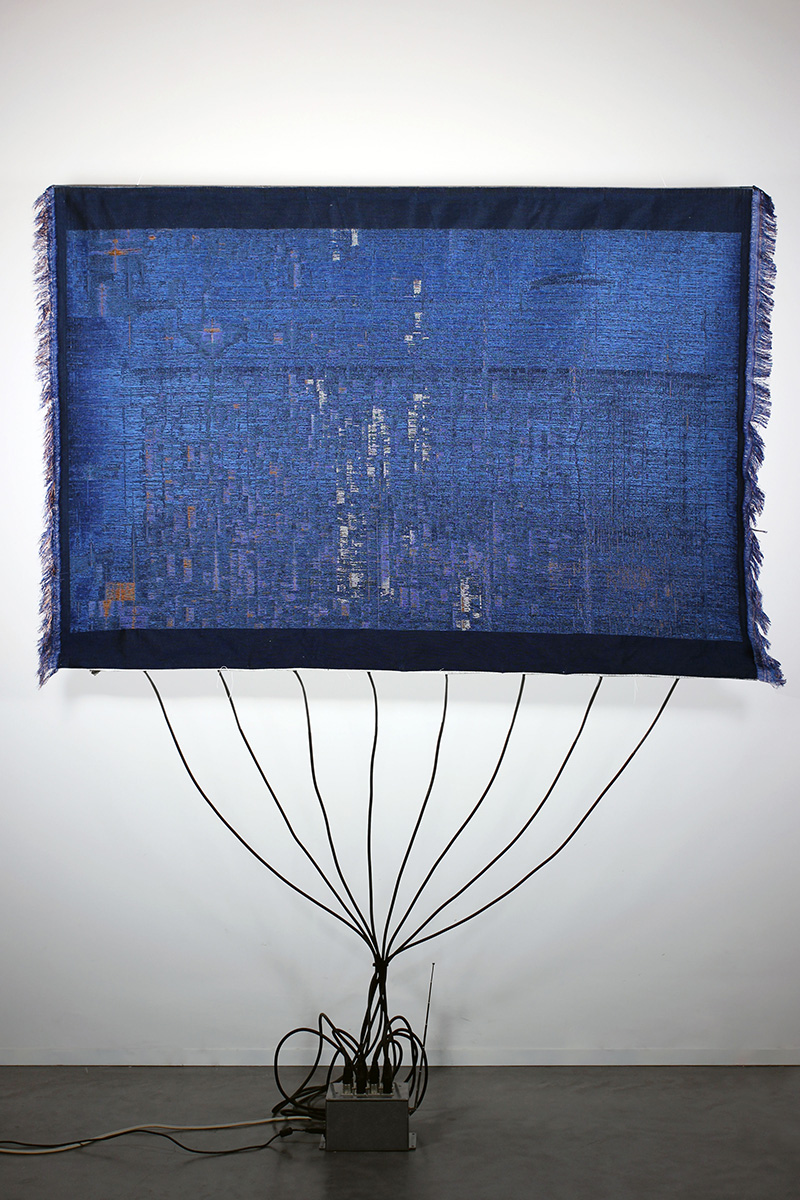
Digital in the real world (DIRL)
Reflecting the blurry, playful boundary between virtual and physical, man-made and machine-made, this aesthetic is following datamoshing, memes and emojis, jumping off our screens and into our spaces.
Zeitguised
One of the pioneers of this style, Berlin-based phygital art and design studio, Zeitguised, has been creating ‘abstract realism’ art films and commercial work. [...] Zeitguised create poetic work like geist.xyz an algorithm and process driven exploration of shape behaviour, texture and colour that is hyper-realistic, but completely computer generated: ‘0% organic’, as Mauler proudly dubs it.
‘It is an aesthetic of seduction, in which the simulation of physical qualities of light and material allow for a trajectory of thought towards something that might exist, even if it only becomes quasi-physical and tactile in the mind of the viewer for the moment… Colour, material and shape are at the centre of the narratives we construct. How they dance with each other, how their frequencies tickle the senses, those kind of choreographies are what our art is all about.’ Henrik Mauler, Zeitguised
[ARTICLE LINK]
Poetic Computation by Taeyoon Choi
[CHAPTER LINK]
What is poetic about computation?
First, there is the poetics of code, which refers to code as a form of poetry. There is something poetic about code itself, the way that syntax works, the way that repetitions work, and the way that instruction becomes execution through abstraction. There is also what I call the poetic effect of code, which is an aesthetic experience realized through code.
To a non-coder, non-artist friend, or to those just beginning to learn to program, I often say code may look like poetry in an alien language. And to those more experienced with code, writing code sometimes feels like writing poetry because it doesn’t always ‘work.’ I mean two things by ‘work’: first, does it work as an art form? Is it good poetry? On the other hand, I mean ‘work’ in a more utilitarian sense. Does it have practical application?
We want to investigate the art of computation as well as the expressive qualities of code, including its aesthetic, visual, aural and material aspects.
While this artistic potential lies at the core of the school’s excitement about code and computation, I’m interested in how this turn towards art may help us explore political possibilities. In this class, I consider computation to be a lens for examining reality and thinking about emergent issues in the world. In other words, computation can be a vehicle for imagining new ways of being in the world. Let’s first step back to look at material precedents of modern computation and computers.
✚ 'Critical Interface Politics'
Joana Moll
'Critical interface manifesto'
Joana Moll
[WEB LINK]
[1] The interface is a device designed and used to facilitate the relationship between systems.
[2] (To) interface is a verb (I interface, you interface ...). The interface occurs, is action.
[3] The interface exists in the crease between space and time; it is a device and simultaneously a situation. It is rendered (updated under thoughtful conditions) and emergent (joining into something new).
[3] The interface collects traces: traces and remains of all agents/agencies which converge in it.
[4] The interface is the tip of the iceberg of a complex system of agents/agencies, of interdependent infrastructures, codes, data, applications, laws, corporations, individuals, sounds, spaces, behaviors, objects, protocols, buttons, times, affects, effects, defects ...
[5] An interface is designed within a cultural context and in turn designs cultural contexts.
[6] The interface responds and embodies the economic logic of the system in which you enroll. It is a political device.
[7] The ideology of the interface is always embedded in the interface itself, but it is not always visible.
[8] Can we make the invisible visible? The more present interfaces are in our lives, the less we perceive them.
[9] The interface uses metaphors that create illusions: I am free, I can go back, I have unlimited memory, I am anonymous, I am popular, I am creative, it's free, it's neutral, it is simple, it is universal. Beware of illusions!
[10] The standard calls for a universal subject and generates processes of homogenization, but reduces the complexity and diversity. What is not standard?
[11] Users are entitled to know what the interface hides. Access to knowledge is a fundamental right.
[12] In the design of the interface, not only skills but also emotions and affections are deployed. How are emotions produced and circulated in interfaces?
[13] The user uses the interface perform agency, they coproduce each other and therefore they have the ability to define, redefine and contradict themselve by action or omission.
Analog Future: Materiality in the Digital Arts
Technological Solutionism
[ARTICLE LINK]
Translations between imagined Internet movements and its real-life implementation outside of the cybernetic utopia are not seamless. Software solutions are often incongruent with the material world, as they oversimplify already existing political problems, further complicating them until they spiral into madness. In his documentary HyperNormalisation ,Adam Curtis argues that, since the 1970s, governments have created a simplified and completely simulated version of reality, run by corporations and kept stable by politicians under the guise of maintaining a functioning society (Curtis, 2016). Social media sites such as Twitter and Facebook are effective for joining masses of people under a common emblem, but fail to mobilize populations into real agents of resistance. This can be seen in movements that began as a hashtag on the netscape but never metamorphosed into physical scenes with lucid goals: the Arab Spring and Occupy Wall Street are potent examples of this (Curtis, 2016) .
The discord between initial hysteria and long-term endurance are markers of the anxious and schizophrenic present, a pathological temporality which fail to be foundational for real change. The desire to program virtual simulacra could indicate a cultural panic over the loss of material conditions, namely that the real world has become so impermeable that users must create alternate realities in order to retroactively imagine a future that includes them. A symptom of this intense alienation, atomization, and privatization is what Jean Baudrillard refers to as hyperreality —a postmodern semiotics in which it is impossible for human consciousness to distinguish reality from a simulation of reality (Baudrillard, 1994). It is the condition in which what is real and fiction are seamlessly blended, augmented by a digitization in which we seek stimuli from a copy world and nothing further. Baudrillard argues that this “reality by proxy” operates not simply as a perverse image, but instead as an autonomous world that lacks definite origin.
Analog Data
Objects which have not been instilled with a human presence (systems whose input/output is illegible to humans) are viewed as “less intelligent.” Conceptions of intelligence are formed on the basis of human understandings of their mechanisms rather than networks of intelligence such as rainforests (Braton, 2015), whose individual components interact with an equally complex semiotic system, but are not considered on the spectrum since much of its intellect remains unparsed to the human eye.
Conceptions of 'information' have been similarly rendered. Material as simple as wood contains an array of information such as: the directional density of the wood, its resistance to stress, strain, bending, and twisting which are dependent on the spatial arrangement of wood fibre, knots, and uniquely grown elements which themselves are data representing the life and growth of a tree. The temperature of ignition and point of ignition of a flame on the wood's surface is dependent on turbulent and laminar flows oxygen around the wood and the vector field which describe the flow velocity at any point in time, as well as the rates of convection and conduction by which these flows cary heat to locations on the woods surface. Wood has potential to absorb moisture in every fibre, and will elongate depending on how much moisture has been absorbed, changing in elasticity depending on this moisture level, not only on the global scale but also on the level of single atomic interactions, etc.
All of this information becomes missed when analyzing through the lens of the anthropocene, in a world where concepts of innovation and intelligence are limited to silicone. In her essay An Internet of Things, Keller Easterling writes about how agency can also be encoded within nonhuman and non-digital subjects:
“We are not accustomed to the idea that non-human, inanimate objects possess agency and activity, just as we are not accustomed to the idea that they can carry information unless they are endowed with code/text-based information technologies…Indeed, the more ubiquitous code/text-based information devices become, the harder it is to see spatial technologies and networks that are independent of the digital” (Easterling, 2012).
✚ 'Analog Future: Materiality in the Digital Arts'
LUX ÆTERNA
Jaime Lobato
[WEB LINK]
An installation based on a computer language, a chemical computer language.
The existence of the human being and the universe itself implies an eternal transformation. Matter, energy and information change constantly and in a permanent way. We configure ourselves in that evolution during a certain time and space and after dying only the information that we help create or transform remains, it remains as a scar in the eternal space/time. The chemical reaction explodes as a big bang and generates and composes (sound and visually). This oeuvre is a representation of this phenomenon as a temporary model.
Lux Æterna is an installation based on a computer language, a chemical computer language. This is a generative work that is based in some experiments on logic gates that work with chemical oscillators (systems of coupled oscillators). The oeuvre was fully designed with the behaviours of the Belousov-Zhavotinsky reaction and its models of energy propagation through the chips-computers. This is an aesthetic experiment on computer laguanges.
✚ LUX ÆTERNA
Jaime Lobato
The title of 100 Electronic Art Years refers to the ambiguous lifetime of color-change textiles, and all electronic art. All art fails. All electronic art fails. The question is how, and with what result?
✚ Maggie Orth
100 Electronic Art Years
✚ ✚ Maggie Orth
100 Electronic Art Years
Am I a man or a machine? There is no ambiguity in the traditional relationship between man and machine: the worker is always, in a way, a stranger to the machine he operates and alienated by it. But al least he retains the precious status of the alienated man. The new technologies, with their new machines, new images, and interactive screens, do not alienate me. Rather, they form an integrated circuit with me.
- J. Baudrillard, "Xerox and Infinity"
In it's pure state it is a motorized block of foam that functions as a fully operational car. Although it is meant to be shaped according to the customer's needs, in its raw state it unintentionally provides a striking anti-image of everything a car design is today.
✚ Marijn Van Der Poll, Modular Car
✚ Lucky People Center International (1998)
The film is a journey through some twenty countries where existential issues are addressed and the participants have all taken a stand against modern society and trying to make human life better.
Look around you..
Squares ..
All I see is Squares ..
[watch 33:30]
✚ ✚ Lucky People Center International (1998)
'Better Than the Real Thing' Franklin Till Journal
[ARTICLE LINK]
Digital in the real world (DIRL) Reflecting the blurry, playful boundary between virtual and physical, man-made and machine-made, this aesthetic is following datamoshing, memes and emojis, jumping off our screens and into our spaces.
Plant Fiction (2010)The project consists of five scenarios, each based on a fictitious plant species mixing fact and fiction to address a very specific issue such as pollution, energy, or recycling through its design. Selfeater (Agava autovora) for example, breaks down its own cellulose to aid ethanol fermetation and is located beneath the elevated moterways near barrier Point Road. The images are hyperrealistic computer renderings of visually plausible but technically fictional plants.
✚ Plant Fiction, Selfeater (Agava autovora)
✚ ✚ Plant Fiction, Selfeater (Agava autovora)
✚ CONTINUE TOPIC
Plant Fiction, Selfeater (Agava autovora)
YOU ARE THE SOURCE PROJECTION AND REFLECTION is an ongoing series of projection-based setups focusing on the non-linear reading in motion. The piece is an attempt to rearrange the understanding of physical space and create an infinity of possible compositions which allow the imaginary to shape the notions of the viewer.
✚ YOU ARE THE SOURCE PROJECTION AND REFLECTION
by Sophia Bulgakova
✚ ✚ YOU ARE THE SOURCE PROJECTION AND REFLECTION
by Sophia Bulgakova
Exhausting a Crowd – Netherlands (2015) brings together our respective fascinations with surveillance and online public commentary. The project is inspired by a 60-page piece of experimental literature by Georges Perec entitled “An Attempt at Exhausting a Place in Paris,” which he wrote on a bench over three days in 1974. In the text, Perec studies the mundane crowd with empirical discipline and takes down notes, brief lists and descriptive reports. Likewise, Kyle McDonald is interested in the actions of random passersby and invites the public to visit the website www.exhaustingacrowd.com to write down their comments on the online surveillance footage streamed there. Unlike a park bench, however, the Web is no place for silent contemplation. In contrast to Perec’s meticulous work, the commentary of an online audience quickly mutates into a distracted haiku. The comments are brief, and the overall result depicts a strange dynamic between personal intention, chaos and serendipity. For the digital native, a taste for surveillance is no longer an ethical issue but rather a source of entertainment.
[external link]
✚ Exhausting a Crowd
✚ ✚ Exhausting a Crowd
✚ Threads That Speak: How The Inca Used Strings to Communicate
✚ ✚ Threads That Speak: How The Inca Used Strings to Communicate
Purkynĕ experiments with galvanic current. Objective versus subjective vision.
Purkynĕ viewed experiments with galvanic current as logical consequence of the temporal aspect of his "physiography". he constructed a battery consisting of twenty pairs of copper and zinc plates with cardboard soaked in ammonia solution between them. For the conductor outside the electrolyte initially, he used guitar strings covered with metal. he took the conductor from the zinc pole an put it in his mouth, and then with the copper pole touched his forehead, bridge of the nose, or temple. ... varied the poles and the positions. When he combined the application of pressure and electrical current to the eyeball, he saw the "artery figure ... which flashed with each discharge across the sphere of vision from the entry point of the optic nerve.
Just as this actually occurs in the movement of sound, it seems likely to me that the eye, when external pressure is applied to it or it self-contract of its own volition, goes into an intimate oscillatory motion mode.
✚ Arseny Avraamov
The Symphony of Industrial Horns
The Symphony of Industrial Horns by Arseny Avraamov was created in 1922 and was performed in Baku in 1922 and Moscow in 1923. The stage of performance is a whole city. The main instruments were industrial horns, horns of fleet and trains, cannon and machine guns, syrens, large choir, aviation and others.
✚ ✚ Arseny Avraamov - The Symphony of Industrial Horns
This reconstruction is based on Mandate (1923) by Avraamov and was created by Sergey Khismatov in 2009. Original reconstruction was created for 8 or more channels around audience to imitate sounding surround of city.
Reawaken is a kinetic sculpture that makes prints. 'technology is there to meet our needs.'
✚ Jeanine Verloop, Reawaken
✚ Purkynĕ
Subjective vision
✚ ✚ Purkynĕ - Subjective vision
If we, as the Good Book says, are ashes, then digital memory is rust. This is palpable by the almost surreal sensation of latency we endure as we play with our digitalia. It is surreal in the sense that we have become accustomed not to notice it. During the interval while we wait for a file to copy or for an Internet download, we experience a non duration, measured out not in coffee spoons but in accumulated microseconds of denial. Certainly, electrons could travel around the earth millions of times in that interval. So why we wait? Because as data pass trough servers and routers, or from one application to another, they are alternately stored as speed-of-light charge packets in semiconductors, wires, and waves, and then as tiny patches of magnetic flux on iron oxide-coated spinning platters in disk drives- from ether to rust and back again, over and over. Relay, Delay, Memory. In the vast flux of signs going between ether and rust, the moment of transfer from energy to matters is heralded by a click. This primordial sign of passage of meaning from one phase to another was first defined by the click in the telegraphic relay, and it continues to reverberate in the noise of the digital, in the torrents of state transitions between 0s and 1s. It is this noise, and the potential bridge it offers between seeing and hearing, that emerges as the apotheosis of our age.
“Today we live in the imaginary world of the screen, of the interface and the reduplication of contiguity and networks. All our machines are screens. We too have become screens, and the interactivity of men has become the interactivity of screens. Nothing that appears on the screen is meant to be deciphered in depth, but actually to be explored instantaneously, in an abreaction immediate to meaning.” Baudrillard, Jean. Xerox and Infinity (trans. Agitac). Paris: Touchepas, 1988, p. 7
✚ Gustav Metzger thinks about nothing
London Fieldworks, artist duo Bruce Gilchrist and Jo Joelson, have created NULL OBJECT: a computer-brain interface, where robust manufacturing technology takes the humble chisels place.
The mind is freed of body, and the augmented mind begins to demonstrate what it’s truly capable of. Future perfect is explored but also the imperfect, what could go wrong and what already has.
✚ ✚ Gustav Metzger thinks about nothing
‘All Colours White’ explores the relationship between what is natural and artificial and the plurality of seemingly indivisible entities and experiences. It consists of a mechanism which projects red, blue and green light onto a canvas sculpture. The projection is a constant loop of 12 minutes. Initially distinct, the colours gradually bleed into each other, creating an intricate spectrum until their collective amalgamation results in pure white light.
In the installation the natural and the digital collide. The specific combination of red, blue and green references the colours that mediate our digital experience, while the composite colour spectrum inherent in white light is intrinsically natural. With a particular interest in temporality, subjective experience and the frameworks through which we perceive the world, ‘All Colours White’ investigates that which coexists but cannot be experienced simultaneously.
✚ Peter Struycken (artist) & Pieter Padmos (physicist)
✚ Multi Machine Performance,
collaborative experiment at Testsite Meent
The plotter knife replaced by pens and markers draws intricate designs and patterns with machine precision.
The loud mechanic sounds generated by the plotter were picked up by a microphone and fed into a complex audiovisual feedback loop where sound was converted into image using hacked VGA cables and a signal stabilizer.
The resulting signal was fed into the CRT monitor showing abstract RGB visuals that where a direct representation of the plotter sounds.
“RGB.VGA.VOLT is an audio/video synthesizer that enables realtime exploration of the rich materiality concealed beneath the consumer interfaces of cathode ray tube computer monitors. By hacking and improperly rewiring the cables of these obsolete devices to short their video signals, their black-boxed analog infrastructure is liberated and driven by digitally synthesized high-frequency complex waveforms, audio playback, and feedback loops that fully exploit their latent visual spectrum. Inspired by early video tools such as the Sandin Image Processor and the Paik-Abe Synthesizer as well as contemporary programming and error-based approaches to sound and moving image, RGB.VGA.VOLT revives an analog aesthetic that has acquired a renewed power and potency in the present era of digital immateriality.”
✚ RGB.VGA.VOLT
James H. Connolly
✚ ✚ Multi Machine Performance,
collaborative experiment at Testsite Meent
✚ ✚ RGB.VGA.VOLT
James H. Connolly
Zach lieberman lecture about poetic computation
Poetic Software by Alexander Roidl
DIY Bionoise
DIY Bionoise (2018) is an instrument in which the performer can generate sound and control noise, deriving from their own body. The instrument DIY Bionoise contains a circuit that can measure the bioelectricity from living beings to create bionoise. Which can be controlled by tactile sense. As a result, this instrument has two functions; a modular synthesizer with an eight-step sequencer and a bionoise controlled mode. DIY Bionoise is developed from my previous work "Sonomatter" which explored the transformation of bioelectrical energy from soil bacteria to sound. Its design has been based on electronic music devices like modular synthesisers and step sequence.
Whole Earth Catalog
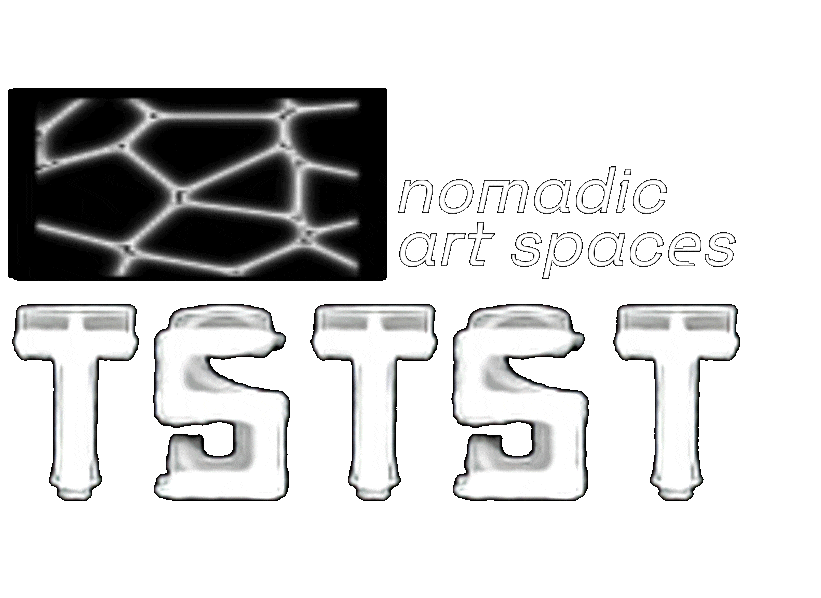
[MANIFEST]
1.All contemporary art is made in the context of the post-internet era.
2.Power is embedded not only in functioning technologies but also in dysfunctionality.
3.History is not linear, it has not "been". Old technologies lie beneath the surface serving as building blocks for modern developments.
4.Hacking and repurposing old technology is a viable alternative to throwaway consumer culture, planned obsolescence is a sin.
5.With a DIY mentality any space can be utilized in a variety of ways.
6.Art and science (and thus technology) exist in overlapping fields, as they have always done.
7.It is pertinent that technology is critically assessed through art.
8.As with scientists, artists should strive to see the world in new ways, and communicate that vision.
9.A popular saying is that “everything in art has already been done” but through new technology new artistic expressions become possible, so this statement cannot be true.
10.But even so; nothing is made within a vacuum.
✚ TSTST reflection
Covid makes it all the more relevant to think about the ways we share information. Talking like this was very refreshing. A conversation without answers, only content and remarks that follow the lines and intersections of each other's interests. Layering information and creating spontaneous links. Exploring and connecting our collective knowledge. Which is inherently human since we have built the world we live in today by tapping into the knowledge of previous generations and those around us.
This way of sharing reminds me of the way our brain functions. As Alessandro Baricco puts it in his book The Game: "Left to its own devices, our brain continuously opens links; it keeps many windows open simultaneously and never gets to the bottom of anything, because it tends to make leaps sideways from subject to subject. All the while, it preserves, in a kind of hard disk, the memory and the map of the journey. ". In a sense navigating the World Wide Web works like our brain, you open windows, keep multiple windows open at the same time and jump between them at lightning speed.
I want to conclude that reflecting on this hot glue experiment made me think about the wonderful term ‘prosthetic knowledge’, information that a person does not know, but can access as needed using technology. Which I think is most wonderful.
- Jeanine Verloop
✚ ✚ THE GAME
Alessandro Baricco
✚ THE GAME
Alessandro Baricco
Then, the web appeared as a witness for the defense, stating that nonlinear thinking was precisely what would help us solve a whole range of problems and would give us a remarkable and meaningful experience of the world. Actually, it didn’t really state it. All you had to do was surf the web for a while and it demonstrated its point to you. This shift could not go unobserved, of course. The message was that the side of you that was instinctive, anarchic, or undisciplined was no less valuable in terms of your powers as an explorer than the pathetic navy officer they were trying to train you to be every day at school. With the proviso—and this is the real point—that you accepted that there were other oceans where reality had been duplicated and converted into a different format that was more suited to your mind. This was where you should have gone surfing. In the waters of the otherworld.
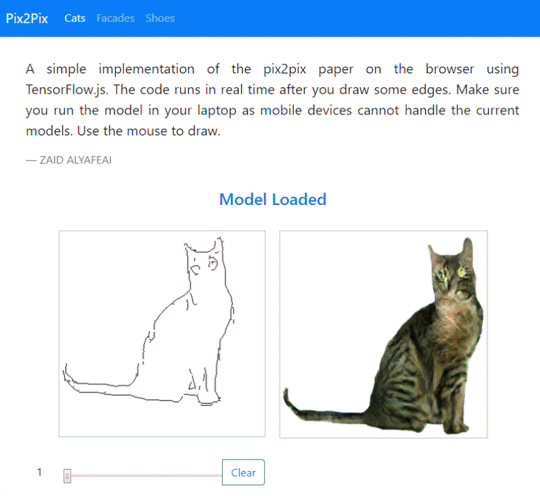
The goal of this installation is not to emulate the visual world of a synesthesian person. I would like to present the process of the perception from the viewpoint of a non-synesthesian person. The box is the transit place or space between the reality and the synesthesian‘s world. We, non-synesthesians cannot see the process itself (that is why we don’t see what is in the box), but as soon as the synesthesian person provides us with some non-visual, oral information, we get a chance to experience visually at least some fragments of his/her visions (on the monitor). In this way the installation is similar to an observation zone, but the zone, of course, is the inner world of the synesthesian.
✚ cross senses – Synaesthesia
[LINK]
✚ ✚ cross senses – Synaesthesia
https://link-journal.com/